Quick Search Algorithm-Based Direct Model Predictive Control of Grid-Connected 289-Level Multilevel Inverter
Abstract
:1. Introduction
- A Quick Search Algorithm (QSA)-based Direct Model Predictive Control (DMPC) technique, enabling the calculation of the single best switching state without the need to search the entire state space exhaustively.
- Proposed a technique independent of objective evaluation during each sampling interval, reducing computational complexity.
- Generalized the new technique to apply to any MLI, expanding its versatility and applicability.
- The computational burden associated with traditional DMPC methods for MLIs is addressed. The new proposal offers improved computational efficiency.
- Demonstrated the capability of the proposed control method to generate lower compared to traditional DMPC techniques.
- Established the robustness of the proposed control scheme under step disturbances in power demand and filter parameter variations.
2. Operation of 289-Level Ladder Multilevel Inverter (LMLI)
3. Modeling of Grid-Connected 289-Level LMLI
4. DMPC of 289-Level LMLI
4.1. Extrapolation
4.2. Delay Compensation for DMPC
4.3. QSA Based DMPC
| Algorithm 1: QSA based DMPC |
 |
5. Simulation Results
5.1. Steady-State Performance of 289-Level LMLI
5.2. Dynamic Response of 289-Level LMLI
5.3. Effect of Parametric Variation
5.4. Reduced with Proposed DMPC
6. Discussion
Author Contributions
Funding
Institutional Review Board Statement
Informed Consent Statement
Data Availability Statement
Acknowledgments
Conflicts of Interest
References
- Nwaigwe, K.N.; Mutabilwa, P.; Dintwa, E. An overview of solar power (PV systems) integration into electricity grids. Mater. Sci. Energy Technol. 2019, 2, 629–633. [Google Scholar] [CrossRef]
- Sayed, M.A.; Elsheikh, M.G.; Orabi, M.; Ahmed, E.M.; Takeshita, T. Grid-Connected Single-Phase Multi-Level Inverter. In Proceedings of the 2014 IEEE Applied Power Electronics Conference and Exposition-APEC 2014, Fort Worth, TX, USA, 16–20 March 2014; pp. 2312–2317. [Google Scholar]
- 519-2022; IEEE Standard for Harmonic Control in Electric Power Systems. IEEE: Piscataway, NJ, USA, 2022. [CrossRef]
- Oliveira, K.C.; Afonso, J.L.; Cavalcanti, M.C. Multilevel inverter for grid-connected photovoltaic systems with active filtering function. IFIP Adv. Inf. Commun. Technol. 2013, 394, 289–298. [Google Scholar] [CrossRef] [Green Version]
- Adefarati, T.; Bansal, R.C. Integration of Renewable Distributed Generators into the Distribution System: A Review. IET Renew. Power Gener. 2016, 10, 873–884. [Google Scholar] [CrossRef]
- Carrasco, J.M.; Franquelo, L.G.; Bialasiewicz, J.T.; Galván, E.; Portillo Guisado, R.C.; Prats, M.Á.M.; León, J.I.; Moreno-Alfonso, N. Power-electronic systems for the grid integration of renewable energy sources: A survey. IEEE Trans. Ind. Electron. 2006, 53, 1002–1016. [Google Scholar] [CrossRef]
- Sajadian, S.; Ahmadi, R. Model predictive control of dual-mode operations Z-source inverter: Islanded and grid-connected. In Proceedings of the 2017 IEEE Energy Conversion Congress and Exposition (ECCE), Cincinnati, OH, USA, 1–5 October 2017; pp. 4971–4977. [Google Scholar] [CrossRef]
- Azab, M. A finite control set model predictive control scheme for single-phase grid-connected inverters. Renew. Sustain. Energy Rev. 2021, 135, 110131. [Google Scholar] [CrossRef]
- Huang, X.; Wang, K.; Fan, B.; Yang, Q.; Li, G.; Xie, D.; Crow, M.L. Robust Current Control of Grid-Tied Inverters for Renewable Energy Integration Under Non-Ideal Grid Conditions. IEEE Trans. Sustain. Energy 2020, 11, 477–488. [Google Scholar] [CrossRef]
- Priyadarshi, A.; Kar, P.K.; Karanki, S.B. Grid Integration of a Reduced Switching Loss Single-Source Boost Multilevel Inverter with Independent Control of Power Transfer and DC-Link Voltage. In Proceedings of the 2021 IEEE 12th Energy Conversion Congress & Exposition-Asia (ECCE-Asia), Singapore, 24–27 May 2021; pp. 1414–1419. [Google Scholar] [CrossRef]
- Shunmugham Vanaja, D.; Stonier, A.A. Grid integration of modular multilevel inverter with improved performance parameters. Int. Trans. Electr. Energy Syst. 2021, 31, e12667. [Google Scholar] [CrossRef]
- Jayakumar, T.; Ramani, G.; Jamuna, P.; Ramraj, B.; Chandrasekaran, G.; Maheswari, C.; Stonier, A.A.; Peter, G.; Ganji, V. Investigation and validation of PV fed reduced switch asymmetric multilevel inverter using optimization based selective harmonic elimination technique. Automatika 2023, 64, 441–452. [Google Scholar] [CrossRef]
- Amamra, S.A.; Meghriche, K.; Cherifi, A.; Francois, B. Multilevel Inverter Topology for Renewable Energy Grid Integration. IEEE Trans. Ind. Electron. 2017, 64, 8855–8866. [Google Scholar] [CrossRef] [Green Version]
- Satti, M.B.; Hasan, A.; Ahmad, M.I. A new multilevel inverter topology for grid-connected photovoltaic systems. Int. J. Photoenergy 2018, 2018, 9704346. [Google Scholar] [CrossRef] [Green Version]
- Trabelsi, M.; Bayhan, S.; Ghazi, K.A.; Abu-Rub, H.; Ben-Brahim, L. Finite-Control-Set Model Predictive Control for Grid-Connected Packed-U-Cells Multilevel Inverter. IEEE Trans. Ind. Electron. 2016, 63, 7286–7295. [Google Scholar] [CrossRef]
- Rodriguez, J.; Cortes, P. Predictive Control of Power Converters and Electrical Drives; Wiley: Hoboken, NJ, USA, 2012. [Google Scholar] [CrossRef]
- Zanchetta, P.; Cortes, P.; Perez, M.; Rodriguez, J.; Silva, C. Finite states model predictive control for Shunt active filters. In Proceedings of the IECON Proceedings (Industrial Electronics Conference), Melbourne, VIC, Australia, 7–10 November 2011; pp. 581–586. [Google Scholar] [CrossRef]
- Cortés, P.; Rodríguez, J.; Quevedo, D.; Silva, C. Predictive current control strategy with imposed load current spectrum. In Proceedings of the 2006 12th International Power Electronics and Motion Control Conference, Portoroz, Slovenia, 30 August–1 September 2006; Volume 23, pp. 252–257. [Google Scholar] [CrossRef]
- Rodriguez, J.; Pontt, J.; Silva, C.A.; Correa, P.; Lezana, P.; Cortes, P.; Ammann, U. Predictive Current Control of a Voltage Source Inverter. IEEE Trans. Ind. Electron. 2007, 54, 495–503. [Google Scholar] [CrossRef]
- Rodriguez, J.; Cortes, P.; Kennel, R.; Kazmierkowski, M.P. Model predictive control - A simple and powerful method to control power converters. In Proceedings of the 2009 IEEE 6th International Power Electronics and Motion Control Conference, Wuhan, China, 17–20 May 2009; pp. 41–49. [Google Scholar] [CrossRef]
- Cortes, P.; Wilson, A.; Kouro, S.; Rodriguez, J.; Abu-Rub, H. Model predictive control of multilevel cascaded H-bridge inverters. IEEE Trans. Ind. Electron. 2010, 57, 2691–2699. [Google Scholar] [CrossRef]
- Beccuti, A.G.; Mariéthoz, S.; Cliquennois, S.; Wang, S.; Morari, M. Explicit model predictive control of DC-DC switched-mode power supplies with extended kalman filtering. IEEE Trans. Ind. Electron. 2009, 56, 1864–1874. [Google Scholar] [CrossRef]
- Cychowski, M.; Szabat, K.; Orlowska-Kowalska, T. Constrained model predictive control of the drive system with mechanical elasticity. IEEE Trans. Ind. Electron. 2009, 56, 1963–1973. [Google Scholar] [CrossRef]
- Xia, C.; Liu, T.; Shi, T.; Song, Z. A Simplified Finite-Control-Set Model-Predictive Control for Power Converters. IEEE Trans. Ind. Inform. 2014, 10, 991–1002. [Google Scholar] [CrossRef]
- Kim, I.; Chan, R.; Kwak, S. Model predictive control method for CHB multi-level inverter with reduced calculation complexity and fast dynamics. IET Electr. Power Appl. 2017, 11, 784–792. [Google Scholar] [CrossRef]
- Yang, Y.; Wen, H.; Fan, M.; Xie, M.; Chen, R. Fast Finite-Switching-State Model Predictive Control Method Without Weighting Factors for T-Type Three-Level Three-Phase Inverters. IEEE Trans. Ind. Inform. 2019, 15, 1298–1310. [Google Scholar] [CrossRef]
- Mora, A.; Cárdenas-Dobson, R.; Aguilera, R.P.; Angulo, A.; Donoso, F.; Rodriguez, J. Computationally Efficient Cascaded Optimal Switching Sequence MPC for Grid-Connected Three-Level NPC Converters. IEEE Trans. Power Electron. 2019, 34, 12464–12475. [Google Scholar] [CrossRef]
- Yang, Y.; Pan, J.; Wen, H.; Zhang, X.; Norambuena, M.; Xu, L.; Rodriguez, J. Computationally Efficient Model Predictive Control With Fixed Switching Frequency of Five-Level ANPC Converters. IEEE Trans. Ind. Electron. 2022, 69, 11903–11914. [Google Scholar] [CrossRef]
- Harbi, I.; Abdelrahem, M.; Ahmed, M.; Kennel, R. Reduced-complexity model predictive control with online parameter assessment for a grid-connected single-phase multilevel inverter. Sustainability 2020, 12, 7997. [Google Scholar] [CrossRef]
- Ma, J.; Song, W.; Wang, X.; Blaabjerg, F.; Feng, X. Low-Complexity Model Predictive Control of Single-Phase Three-Level Rectifiers With Unbalanced Load. IEEE Trans. Power Electron. 2018, 33, 8936–8947. [Google Scholar] [CrossRef] [Green Version]
- Harbi, I.; Rodriguez, J.; Liegmann, E.; Makhamreh, H.; Heldwein, M.L.; Novak, M.; Rossi, M.; Abdelrahem, M.; Trabelsi, M.; Ahmed, M.; et al. Model Predictive Control of Multilevel Inverters: Challenges, Recent Advances, and Trends. IEEE Trans. Power Electron. 2023, 1–24. [Google Scholar] [CrossRef]
- Banaei, M.R.; Salary, E.; Khounjahan, H. A Ladder Multilevel Inverter Topology with Reduction of On-state Voltage Drop. Gazi Univ. J. Sci. Part A Eng. Innov. 2013, 1, 1–9. [Google Scholar]
- Esfandiari, E.; Mariun, N.B. Experimental results of 47-level switch-ladder multilevel inverter. IEEE Trans. Ind. Electron. 2013, 60, 4960–4967. [Google Scholar] [CrossRef]
- Alishah, R.S.; Hosseini, S.H.; Babaei, E.; Sabahi, M. Optimal Design of New Cascaded Switch-Ladder Multilevel Inverter Structure. IEEE Trans. Ind. Electron. 2017, 64, 2072–2080. [Google Scholar] [CrossRef]
- Zaid, M.M.; Sibtain, M.; Malik, M.U.; Moosa, M. Single and Three Phase Switch Ladder Multilevel Inverter. In Proceedings of the 2018 International Conference on Power Generation Systems and Renewable Energy Technologies (PGSRET), Islamabad, Pakistan, 10–12 September 2018; pp. 1–6. [Google Scholar] [CrossRef]
- Majareh, S.H.L.; Sedaghati, F.; Hosseinpour, M.; Mousavi-Aghdam, S.R. Design, analysis and implementation of a generalised topology for multilevel inverters with reduced circuit devices. IET Power Electron. 2019, 12, 3724–3731. [Google Scholar] [CrossRef]
- Saeedian, M.; Adabi, J.; Hosseini, S.M. Cascaded multilevel inverter based on symmetric-asymmetric DC sources with reduced number of components. IET Power Electron. 2017, 10, 1468–1478. [Google Scholar] [CrossRef]
- Prem, P.; Sugavanam, V.; Abubakar, A.I.; Ali, J.S.M.; C Sengodan, B.; Krishnasamy, V.; Padmanaban, S. A novel cross-connected multilevel inverter topology for higher number of voltage levels with reduced switch count. Int. Trans. Electr. Energy Syst. 2020, 30, e12381. [Google Scholar] [CrossRef]
- Mahato, B.; Majumdar, S.; Jana, K.C. Single-phase Modified T-type—Based multilevel inverter with reduced number of power electronic devices. Int. Trans. Electr. Energy Syst. 2019, 29, e12097. [Google Scholar] [CrossRef]
- Lee, S.S.; Lee, K.B.; Alsofyani, I.M.; Bak, Y.; Wong, J.F. Improved Switched-Capacitor Integrated Multilevel Inverter With a DC Source String. IEEE Trans. Ind. Appl. 2019, 55, 7368–7376. [Google Scholar] [CrossRef]
- Vishwajith, N.; Rao, S.N.; Sachin, S. Performance analysis of reduced switch ladder type multilevel inverter using various modulation control strategies. J. Phys. Conf. Ser. 2020, 1706, 012092. [Google Scholar] [CrossRef]
- Aalami, M.; Marangalu, M.G.; Zadeh, S.G.; Babaei, E.; Hosseini, S.H. Ladder-Switch Based Multilevel Inverter with Reduced Devices Count. In Proceedings of the 2020 11th Power Electronics, Drive Systems, and Technologies Conference, Tehran, Iran, 4–6 February 2020. [Google Scholar] [CrossRef]
- Baig, M.A.; Noor-Ul-Ain; Rahman Kashif, S.A.; Salman Fakhar, M. Improved Finite Control Set Model Predictive Control of Switch Ladder Multilevel Inverter. In Proceedings of the 2022 International Conference on Electrical Engineering and Sustainable Technologies (ICEEST), Lahore, Pakistan, 14–15 December 2022; pp. 1–7. [Google Scholar] [CrossRef]
- Kundu, S.; Member, S.; Panda, S.; Banerjee, S.; Member, S. Fulfillment of Some Important Voltage Harmonic Standards in a FPGA Controlled CHB Multilevel Inverter Utilizing Improved SHM-PAM Technique. IEEE Trans. Ind. Appl. 2023, 1–16. [Google Scholar] [CrossRef]
- Abdelrahem, M.; Hackl, C.M.; Zhang, Z.; Kennel, R. Robust Predictive Control for Direct-Driven Surface-Mounted Permanent-Magnet Synchronous Generators Without Mechanical Sensors. IEEE Trans. Energy Convers. 2018, 33, 179–189. [Google Scholar] [CrossRef]
- Ahmed, M.; Abdelrahem, M.; Kennel, R. Highly Efficient and Robust Grid Connected Photovoltaic System Based Model Predictive Control with Kalman Filtering Capability. Sustainability 2020, 12, 4542. [Google Scholar] [CrossRef]
- Abdelrahem, M.; Rodríguez, J.; Kennel, R. Improved direct model predictive control for grid-connected power converters. Energies 2020, 13, 2597. [Google Scholar] [CrossRef]
- Abdelrahem, M.; Hackl, C.M.; Kennel, R. Finite set model predictive control with on-line parameter estimation for active frond-end converters. Electr. Eng. 2018, 100, 1497–1507. [Google Scholar] [CrossRef]
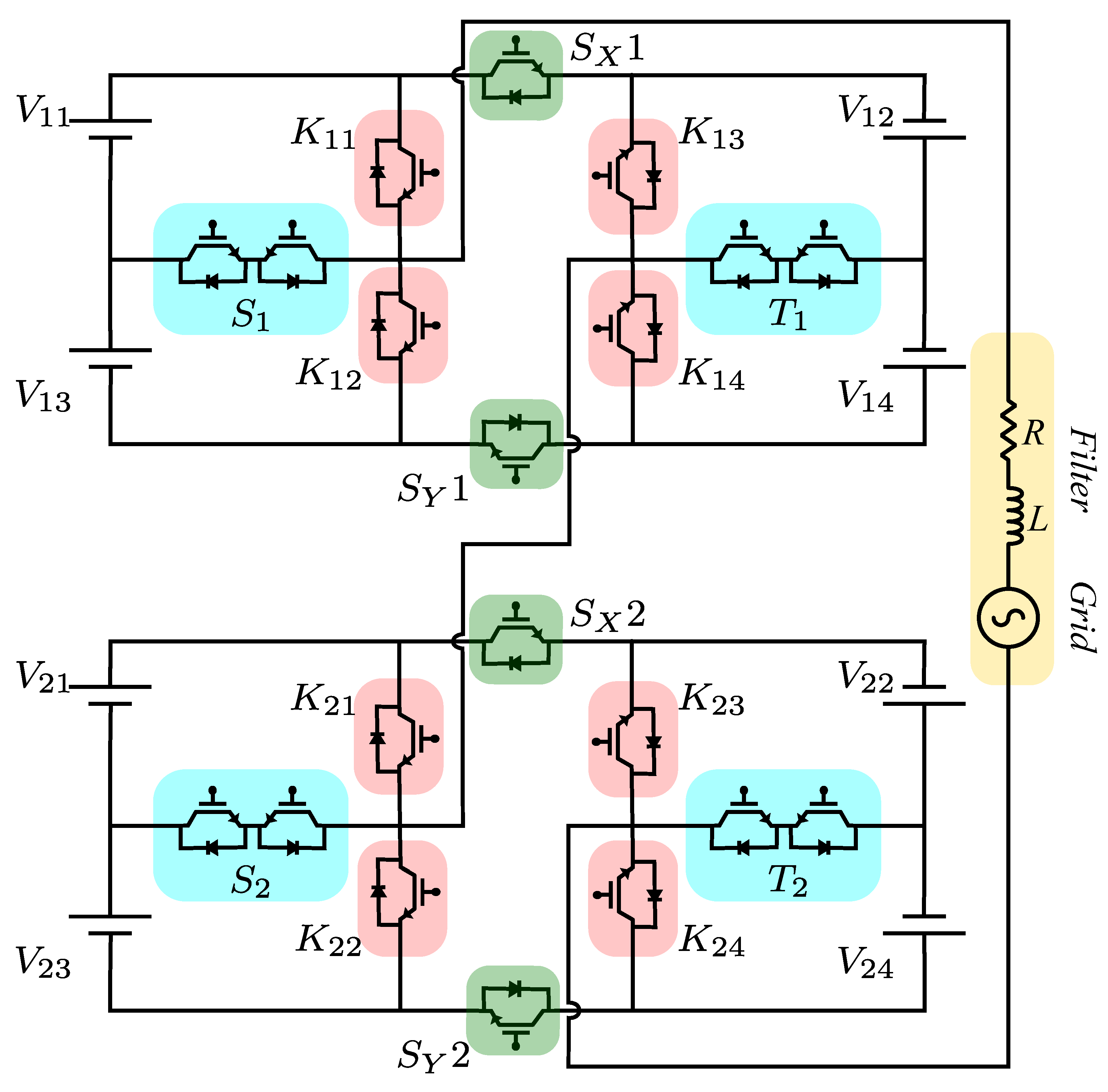
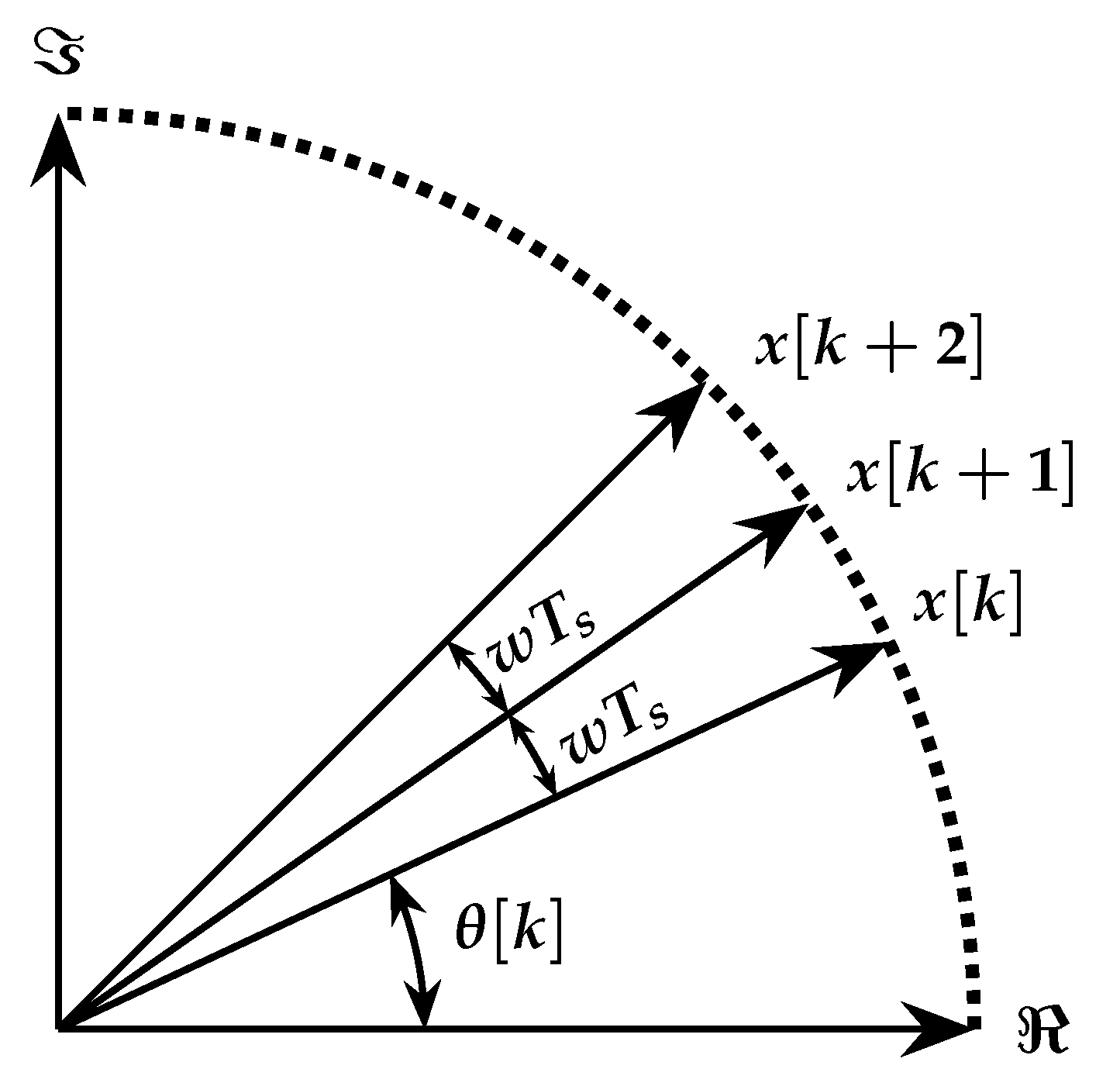
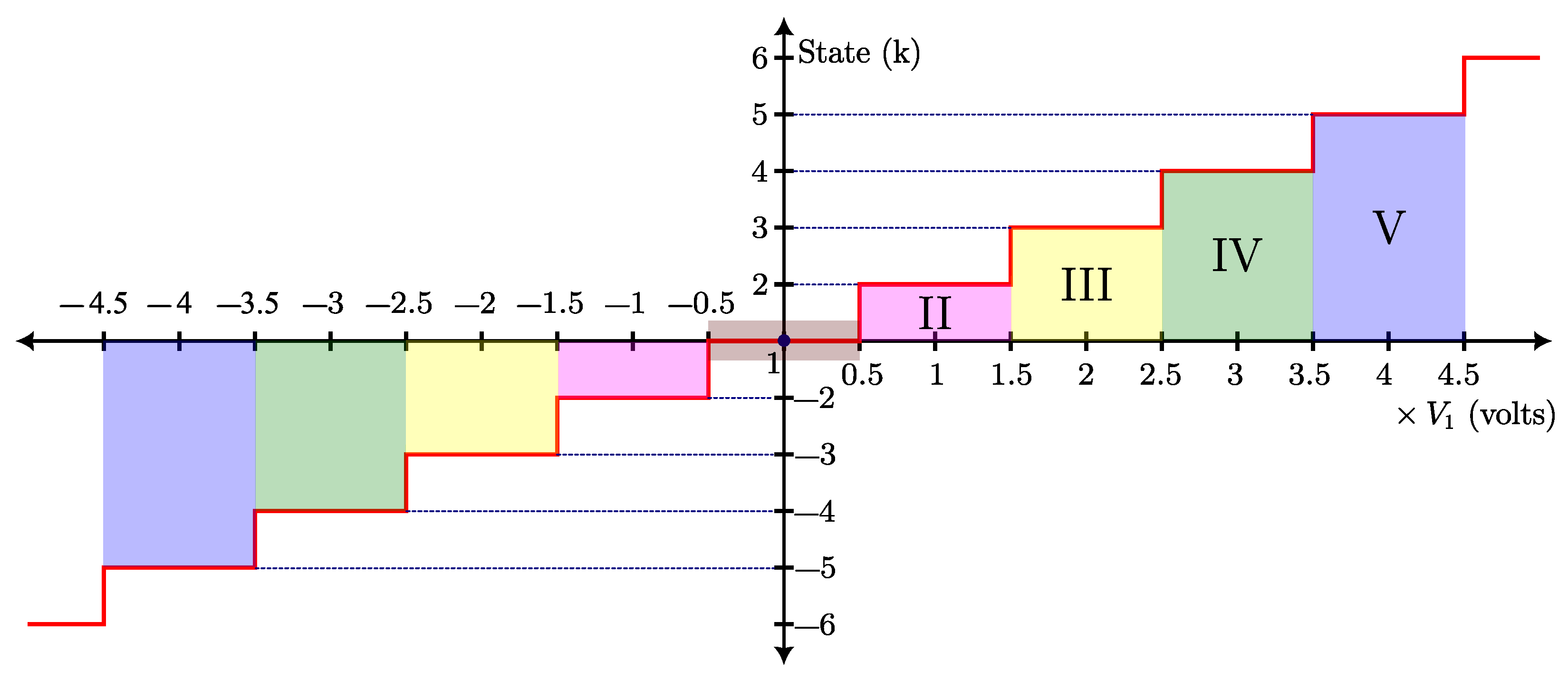




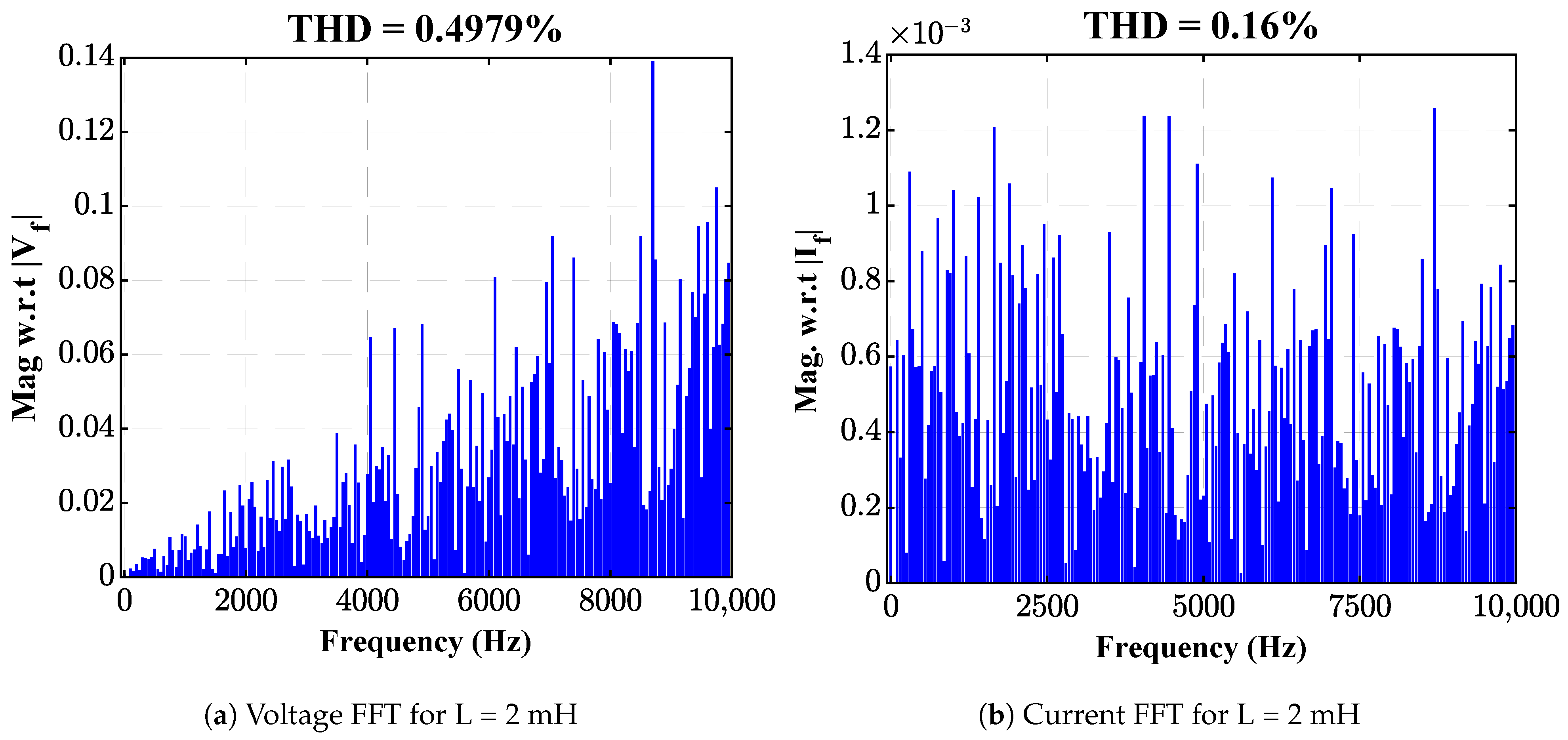


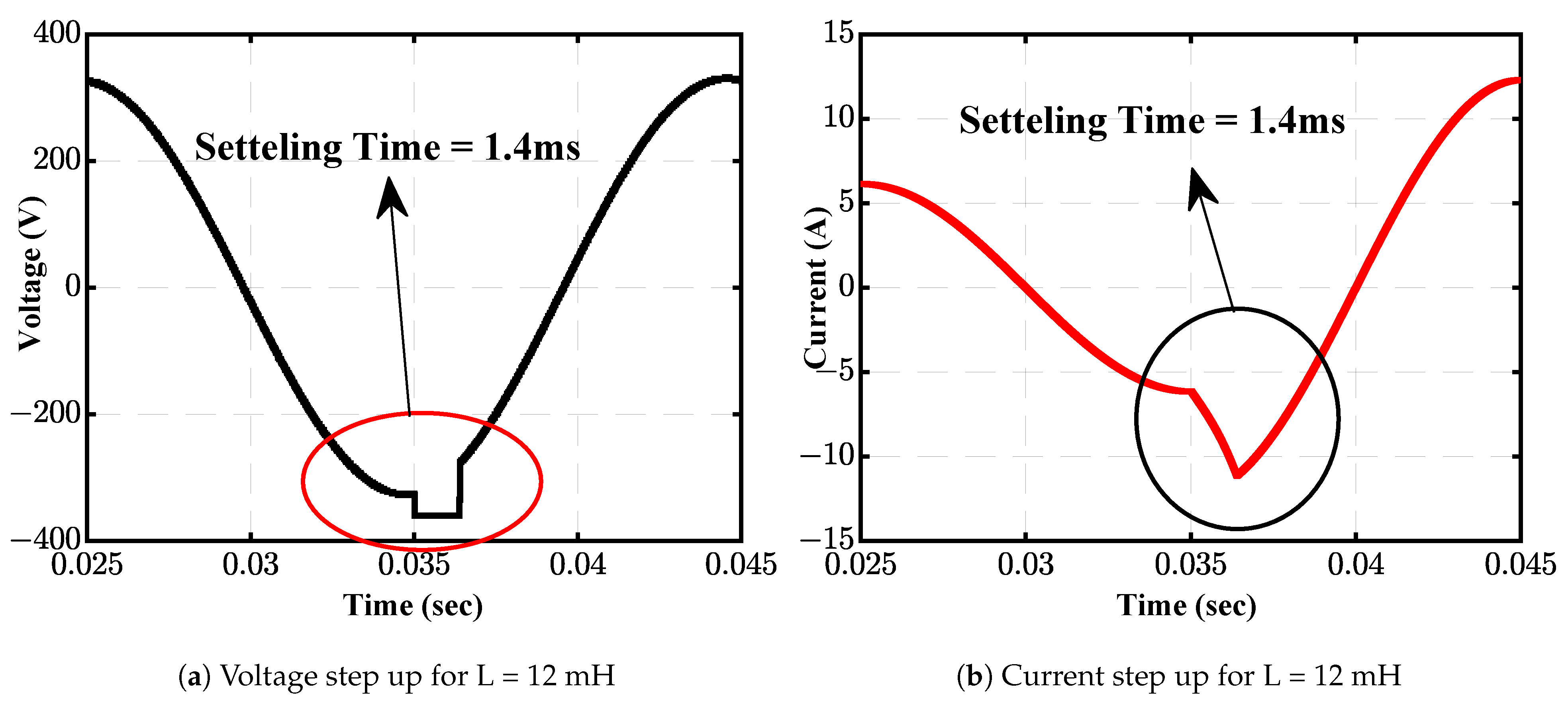
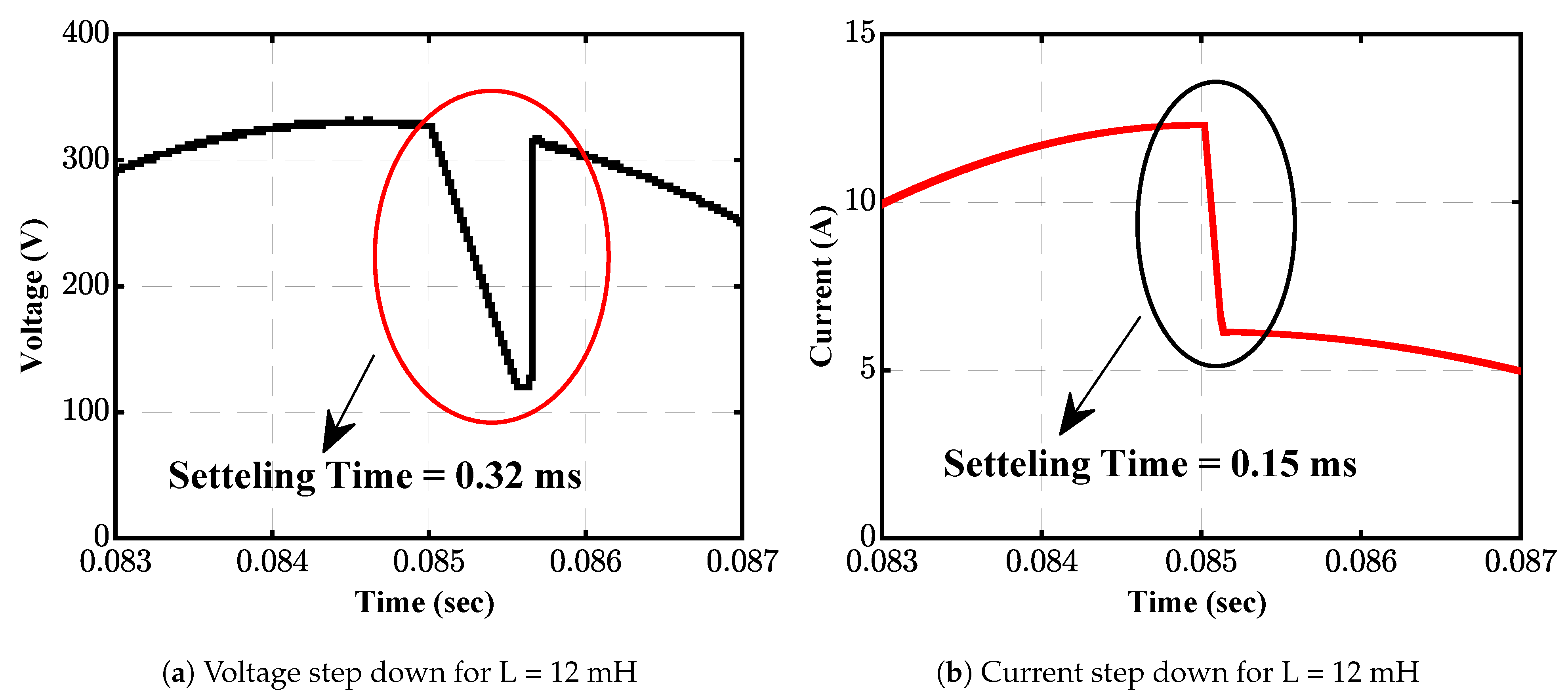
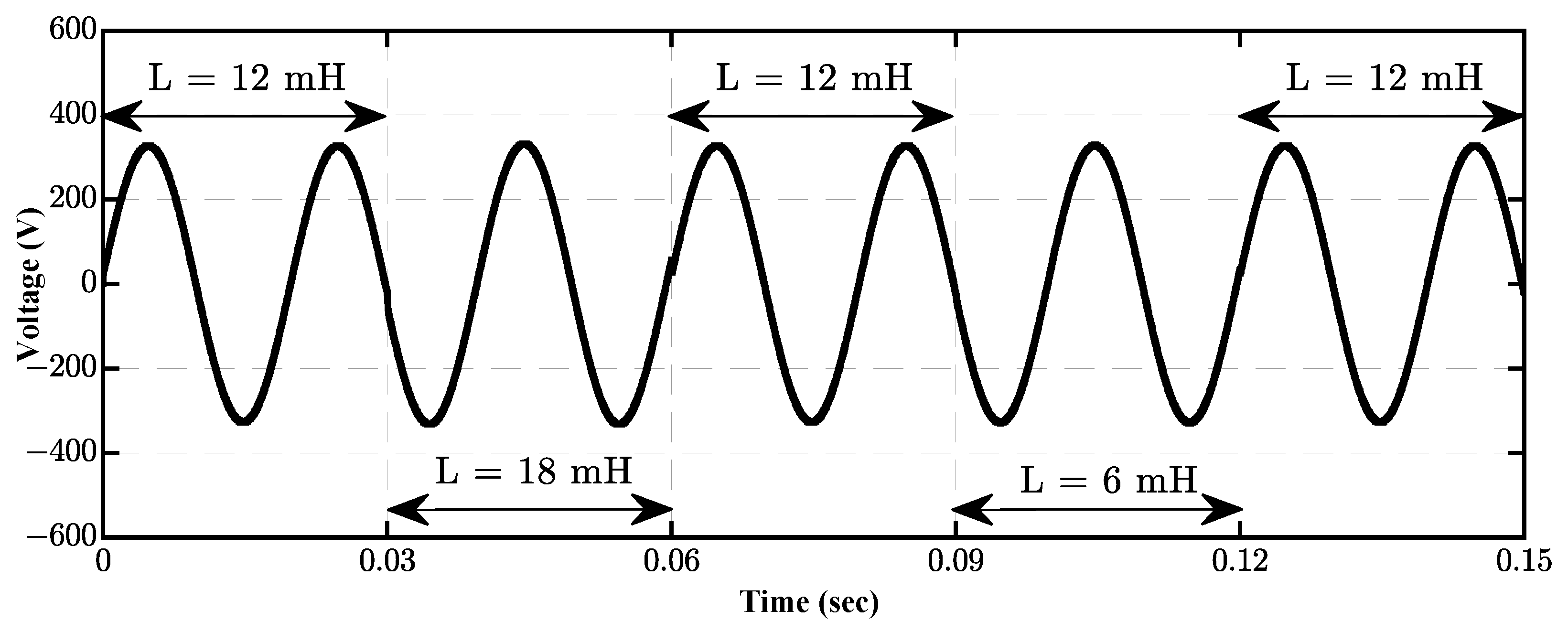
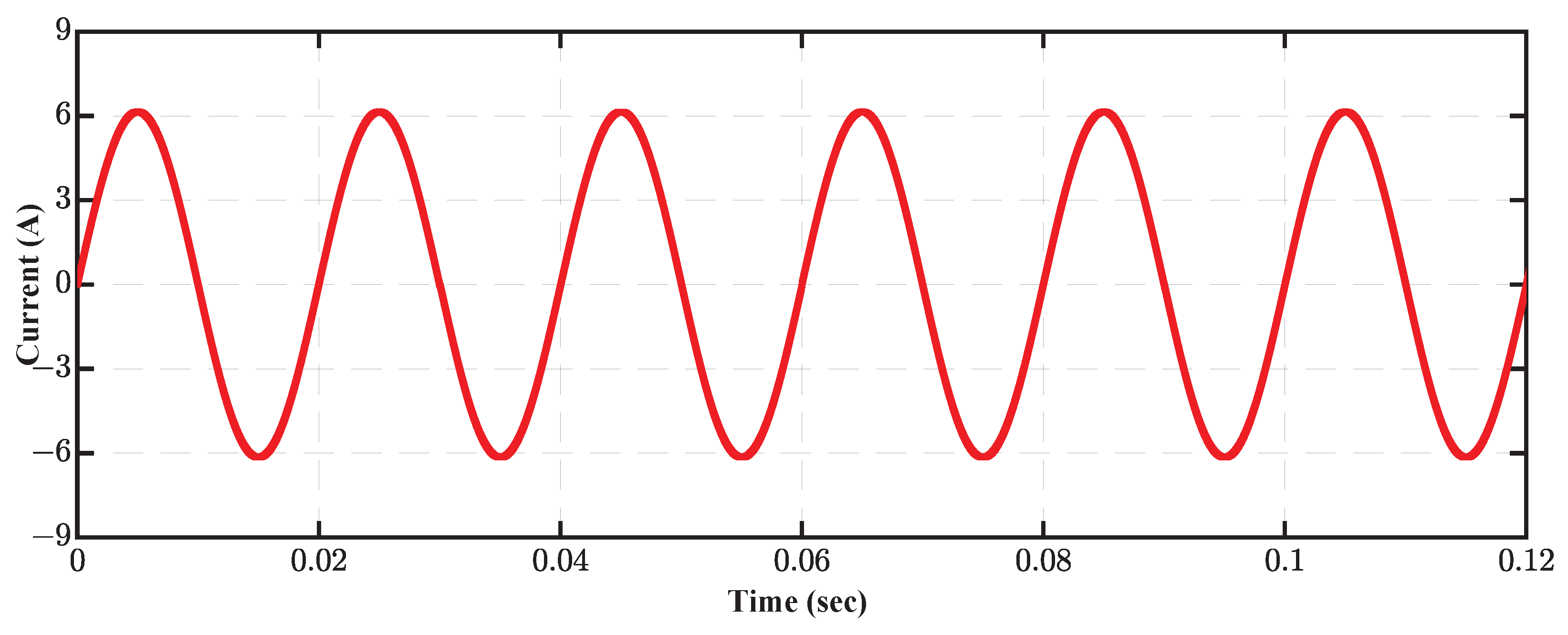
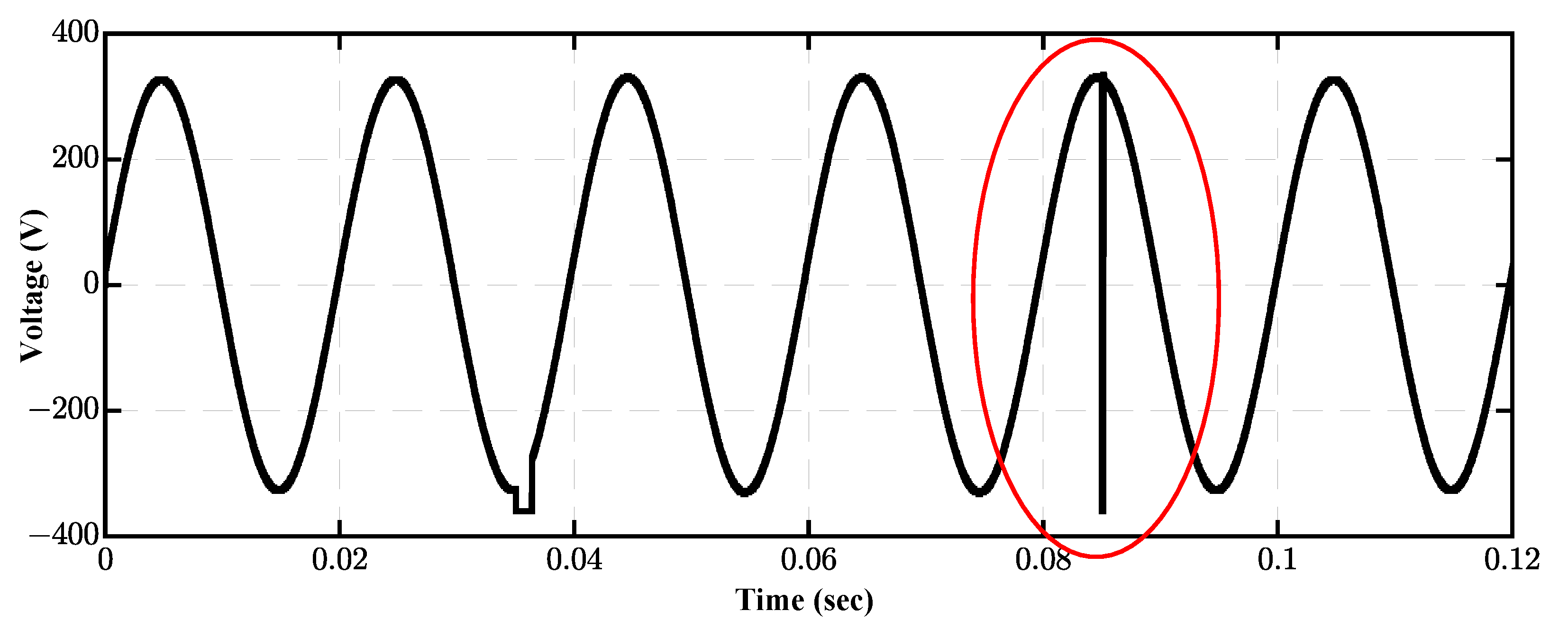
| Switching States for 289-Level LMLI | |||||||||||||||||
|---|---|---|---|---|---|---|---|---|---|---|---|---|---|---|---|---|---|
| No. | |||||||||||||||||
| 1 | 1 | 0 | 1 | 0 | 0 | 0 | 1 | 0 | 1 | 0 | 1 | 0 | 0 | 0 | 1 | 0 | 0 |
| 2 | 0 | 0 | 0 | 1 | 1 | 0 | 0 | 1 | 1 | 0 | 1 | 0 | 0 | 0 | 1 | 0 | |
| 3 | 0 | 0 | 1 | 0 | 1 | 0 | 1 | 0 | 1 | 0 | 1 | 0 | 0 | 0 | 1 | 0 | |
| 4 | 0 | 1 | 0 | 0 | 0 | 1 | 0 | 1 | 1 | 0 | 1 | 0 | 0 | 0 | 1 | 0 | |
| 5 | 1 | 0 | 0 | 0 | 0 | 1 | 1 | 0 | 1 | 0 | 1 | 0 | 0 | 0 | 1 | 0 | |
| 6 | 1 | 0 | 0 | 1 | 0 | 0 | 0 | 1 | 1 | 0 | 1 | 0 | 0 | 0 | 1 | 0 | |
| 7 | 0 | 1 | 1 | 0 | 0 | 0 | 1 | 0 | 1 | 0 | 1 | 0 | 0 | 0 | 1 | 0 | |
| 8 | 0 | 1 | 1 | 0 | 0 | 0 | 0 | 1 | 1 | 0 | 1 | 0 | 0 | 0 | 1 | 0 | |
| 9 | 1 | 0 | 0 | 1 | 0 | 0 | 1 | 0 | 1 | 0 | 1 | 0 | 0 | 0 | 1 | 0 | |
| 10 | 0 | 0 | 0 | 0 | 1 | 1 | 0 | 1 | 1 | 0 | 1 | 0 | 0 | 0 | 1 | 0 | |
| 11 | 0 | 0 | 0 | 0 | 1 | 1 | 1 | 0 | 1 | 0 | 1 | 0 | 0 | 0 | 1 | 0 | |
| 12 | 1 | 0 | 0 | 0 | 0 | 1 | 0 | 1 | 1 | 0 | 1 | 0 | 0 | 0 | 1 | 0 | |
| 13 | 0 | 1 | 0 | 0 | 0 | 1 | 1 | 0 | 1 | 0 | 1 | 0 | 0 | 0 | 1 | 0 | |
| 14 | 0 | 0 | 1 | 0 | 1 | 0 | 0 | 1 | 1 | 0 | 1 | 0 | 0 | 0 | 1 | 0 | |
| 15 | 0 | 0 | 0 | 1 | 1 | 0 | 1 | 0 | 1 | 0 | 1 | 0 | 0 | 0 | 1 | 0 | |
| 16 | 1 | 0 | 1 | 0 | 0 | 0 | 0 | 1 | 1 | 0 | 1 | 0 | 0 | 0 | 1 | 0 | |
| 17 | 0 | 1 | 0 | 1 | 0 | 0 | 1 | 0 | 1 | 0 | 1 | 0 | 0 | 0 | 1 | 0 | |
| ⋮ | ⋮ | ⋮ | ⋮ | ⋮ | ⋮ | ⋮ | ⋮ | ⋮ | ⋮ | ⋮ | ⋮ | ⋮ | ⋮ | ⋮ | ⋮ | ⋮ | ⋮ |
| 189 | 0 | 1 | 1 | 0 | 0 | 0 | 1 | 0 | 0 | 0 | 0 | 1 | 1 | 0 | 0 | 1 | |
| ⋮ | ⋮ | ⋮ | ⋮ | ⋮ | ⋮ | ⋮ | ⋮ | ⋮ | ⋮ | ⋮ | ⋮ | ⋮ | ⋮ | ⋮ | ⋮ | ⋮ | ⋮ |
| 289 | 0 | 1 | 0 | 1 | 0 | 0 | 1 | 0 | 0 | 1 | 0 | 1 | 0 | 0 | 1 | 0 | |
Disclaimer/Publisher’s Note: The statements, opinions and data contained in all publications are solely those of the individual author(s) and contributor(s) and not of MDPI and/or the editor(s). MDPI and/or the editor(s) disclaim responsibility for any injury to people or property resulting from any ideas, methods, instructions or products referred to in the content. |
© 2023 by the authors. Licensee MDPI, Basel, Switzerland. This article is an open access article distributed under the terms and conditions of the Creative Commons Attribution (CC BY) license (https://creativecommons.org/licenses/by/4.0/).
Share and Cite
Baig, M.A.; Kashif, S.A.R.; Khan, I.A.; Abbas, G. Quick Search Algorithm-Based Direct Model Predictive Control of Grid-Connected 289-Level Multilevel Inverter. Electronics 2023, 12, 3312. https://doi.org/10.3390/electronics12153312
Baig MA, Kashif SAR, Khan IA, Abbas G. Quick Search Algorithm-Based Direct Model Predictive Control of Grid-Connected 289-Level Multilevel Inverter. Electronics. 2023; 12(15):3312. https://doi.org/10.3390/electronics12153312
Chicago/Turabian StyleBaig, Muhammad Anas, Syed Abdul Rahman Kashif, Irfan Ahmad Khan, and Ghulam Abbas. 2023. "Quick Search Algorithm-Based Direct Model Predictive Control of Grid-Connected 289-Level Multilevel Inverter" Electronics 12, no. 15: 3312. https://doi.org/10.3390/electronics12153312









